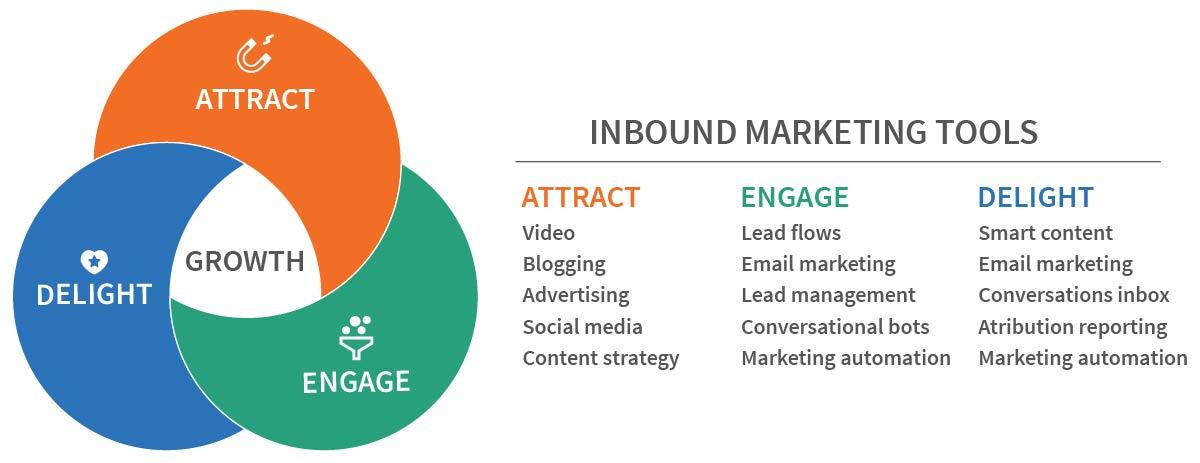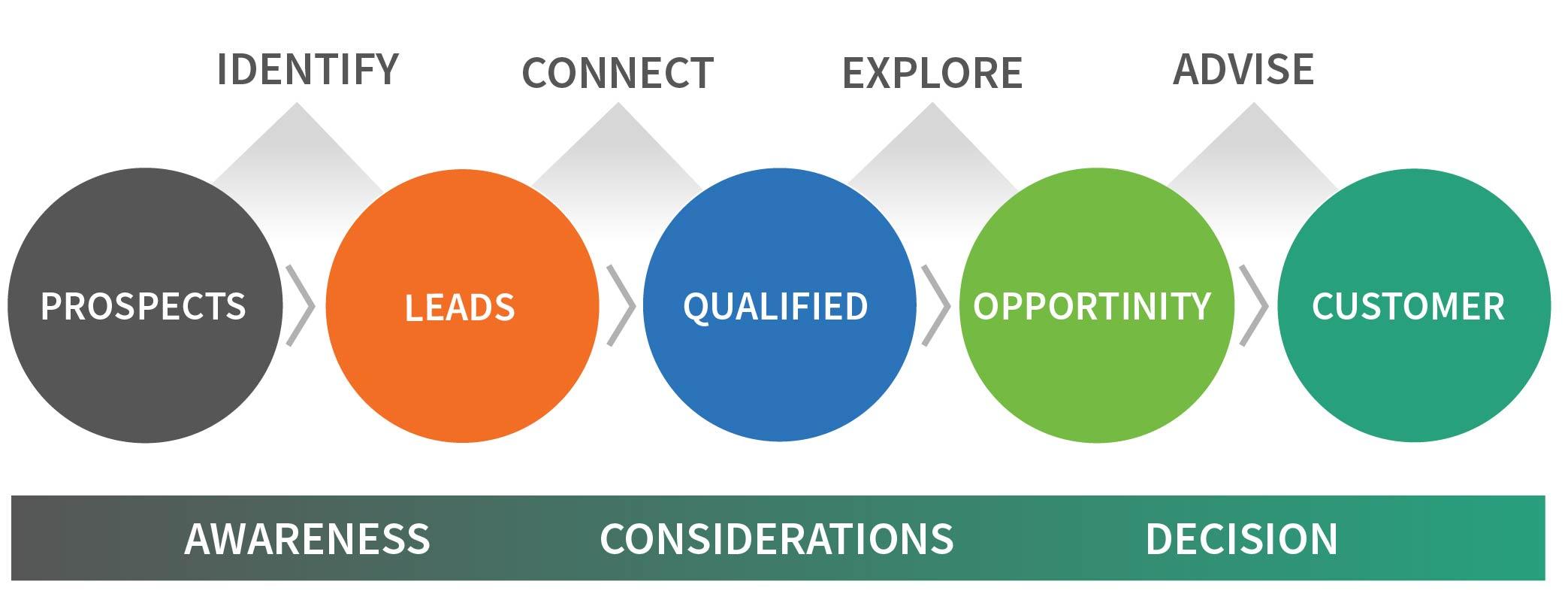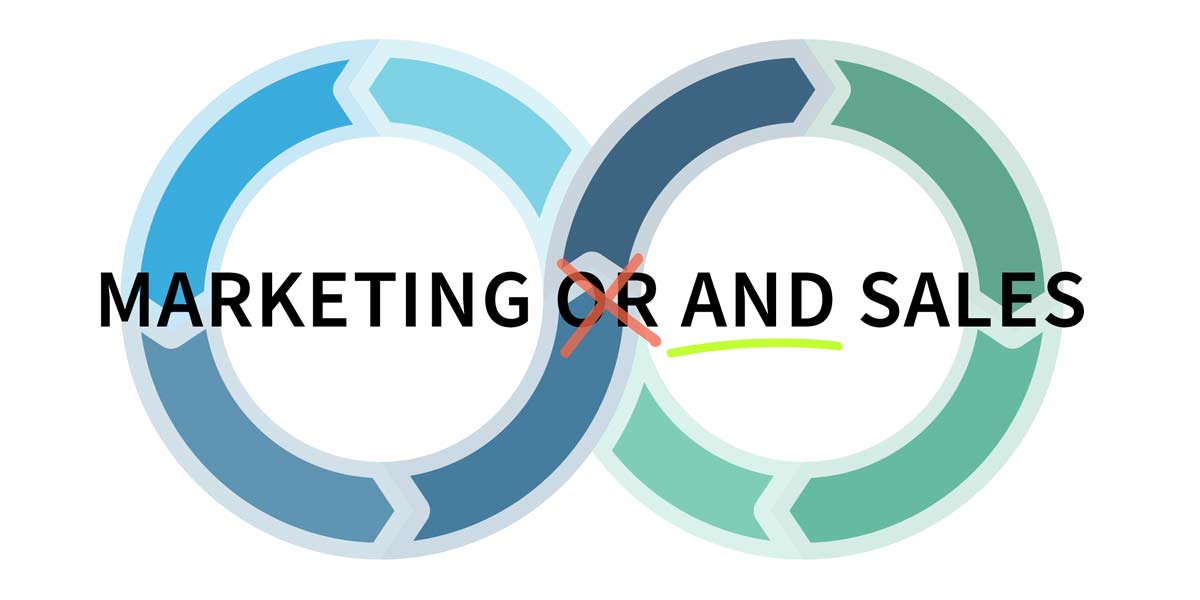How important is customer acquisition to your business? Should you invest in marketing or sales? How can you increase your customer base with the least amount of waste and the greatest chance of success? If you’re a business owner or key stakeholder, you’re likely laser-focused on growing your business and sorting out the right budget allocation for marketing and sales.
Here’s what we recommend: stop thinking about marketing and sales as individual silos. The most productive approach to growing your business today means updating your mindset with a more integrated process for customer aquisition.
Buyers are sophisticated and demanding. Proving value is more effective than trying to convince. Your sales and marketing efforts should be a streamlined collaboration based on a united methodology that reduces friction and increases efficiency.
Marketing and Sales Share a Common Goal
Marketing and sales are separate efforts, yet share a common goal: to attract prospects and convert them to customers. Both business units impact lead generation and revenue.
Today, customers are empowered with more information and choices than ever. Digital content like blogs, FAQs, ebooks, videos, and social media makes it easy for buyers to do their own research, understand their needs, identify options, and take control of the sales process. Buyers now have the ability to create their own customer journey. We no longer want to be “sold to”, we expect to be educated and, sometimes, entertained.
Savvy business owners and executives are building marketing and sales business units that work hand-in-hand, with a focus on customer experience. Smart sales is about attracting targeted leads, qualifying them, then closing the right ones. This is referred to as inbound sales, a powerful tool for reducing friction and improving results.
Inbound marketing has evolved into inbound methodology that can be applied to all customer facing elements of a business including marketing, sales, account management, project management, and customer service.
Inbound sales is the natural extension of inbound marketing, a term and methodology around for awhile now. Inbound marketing helps before it asks anything in return of prospects, providing value to prospects before presuming any value from them. Much of this is done through compelling content that addresses the problems of buyers and makes prospects smarter without any hidden agenda. Inbound marketing creates awareness and attracts leads for a company by putting the needs of its audience first and its own needs second. Inbound marketing has evolved into inbound methodology that can be applied to all customer facing elements of a business including marketing, sales, account management, project management, and customer service.
From “Always Be Closing” to “Always Be Helping”
To get the most out of inbound methodology, sales and marketing need to synchronized. As inbound marketing generates and qualifies leads, sales continues the process to ensure that buyers are the right fit for them and that they’re the right fit for their buyers.
Sales determines this by identifying the individual needs of buyers and guiding them through the decision-making process, a collaborative exploration fueled by helpfulness. Inbound sales shifts the “Always Be Closing” mantra to “Always Be Helping.”
With inbound sales, we rely on analytics to examine digital behaviors from buyers: what forms they’ve filled out, what pages they’ve visited, what content they’ve read, what emails they’ve opened and clicked on. From this activity alone, we can begin to understand the buyer’s journey and start crafting an approach tailored to their needs, even before the first conversation.

Inbound marketing establishes specific buyer personas, develops content and activity that will attract these personas, draws in qualified buyers who are actually interested in what you’re selling, and helps these buyers understand your value.

Inbound sales is aligned with your buyer personas and continues this qualification process. That means learning more about targeted buyers through research and direct interaction, guiding buyers to explore their needs and how you might help, and building a relationship of trust that sets the stage for a satisfied customer.
You Need a CRM Strategy
The tool at the core of sales and marketing for every business is their CRM (customer relationship manager). If your product or service is the heart of your business, the CRM is the brain. Today, companies have access to very sophisticated tools for customer relationship management. It’s never been easier to implement a CRM strategy that captures insights, analyzes data, and facilitates collaboration.
Your CRM will serve as the control tower for your inbound marketing and sales efforts, allowing you to align your seller’s journey with the buyer’s journey of your prospects. As buyers move through the different stages – from awareness of their problem, to consideration of their options, to a decision about their solution – you should be moving in tandem, from identifying potential buyers, to connecting with these prospects, to exploring whether there’s a fit, to advising them of their options.
The process should look something like this:

As you think through your investment in marketing and sales, consider approaching these business units in a coordinated fashion. You’ll find this a more efficient, more productive, and more predictive method for success. Focus your budget on a CRM strategy that powers the sales and marketing process and empowers your entire team with integrated technology, automation, analytics, and personalization tools.
This article was written with the input of Shanna Belott, founder of preDiction, a content marketing firm for thought leaders.


